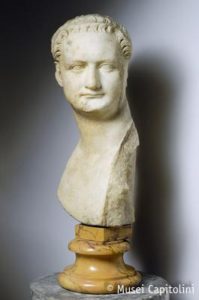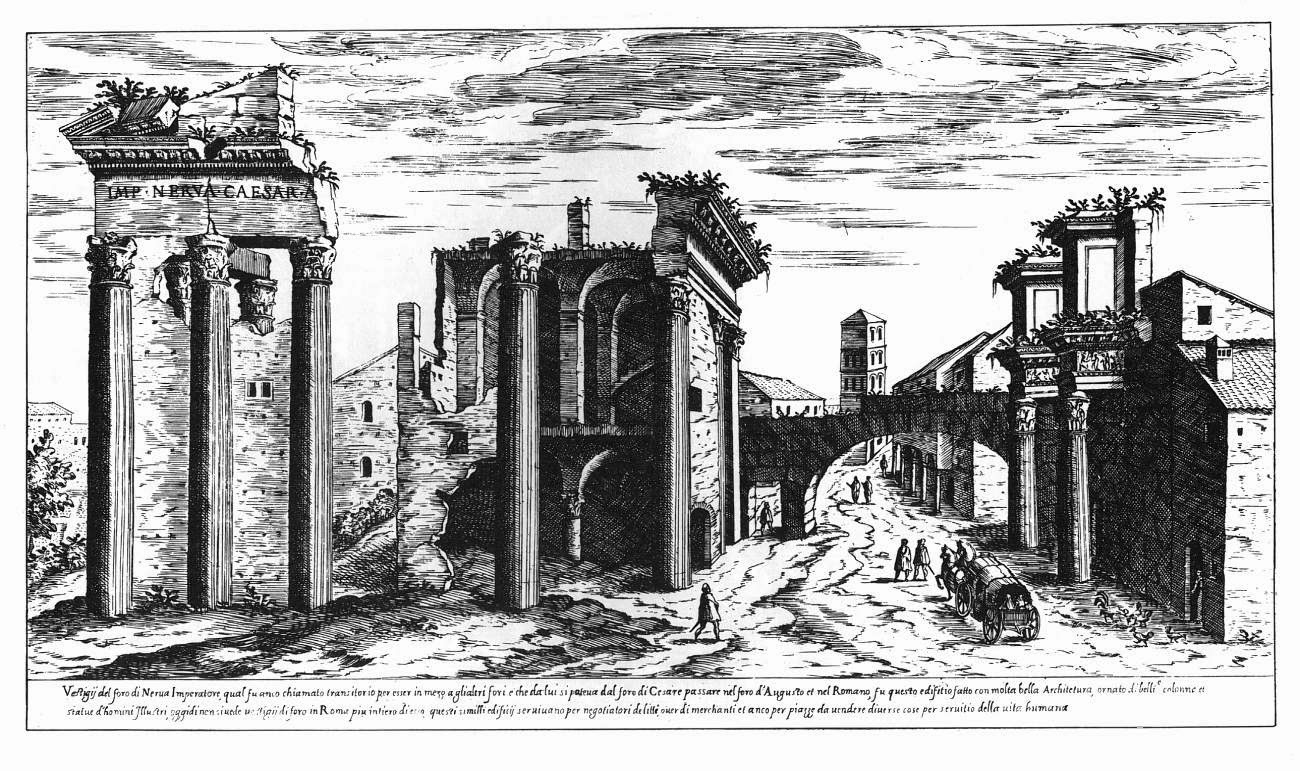
During the turbulent times comprised between 85 and 95 A.D., the area located between the Forum of Caesar, the Forum of Augustus (north) and the Forum of the Peace (south) underwent several transformations and was finally monumentalized by the construction of a fourth forum by the emperor Domitian (81-96 A.D.). Domitian was murdered in 96 and the new Forum was inaugurated in the year 97 by his successor Nerva (96-98 A.D.) who completed the construction and from which the Forum took his name.
The long and narrow space available for the new Forum did not allow the planning of porticoes which were replaced by colonnades and trabeation projecting inward from the outer wall. Out of these colonnades, probably made up of fifty columns, only two columns survive today. They are commonly called “Colonnacce” for their ruined appearance. The columns were made of Pavonazzetto marble (from modern day Turkey and typically displaying purple veins against a white background).
Above the projecting colonnade, metopes depicting the people that lived in the Empire decorated the attic. One of these, which used to be interpreted as representing Minerva, can be seen today in its original position above the “Colonnacce”. It has been recently identified as the personification of the Pirusti, an ancient population of the Balkan Peninsula (fragments of another similar figure are on display in the Museum of the Imperial Fora). The frieze on the trabeation displayed stories of deities as it can be seen from the preserved section where the myth of Minerva is depicted.

The Temple of Minerva was embedded in the centre of the short eastern side of the Forum. It had six columns on the façade and an uncommonly downward tilted tympanum. During the Middle Ages the Temple was occupied by a two-storeys structure. It survived in a good state of preservation until 1606 when Pope Paul V (1605-1621) demolished it completely to employ the marble as construction material.

